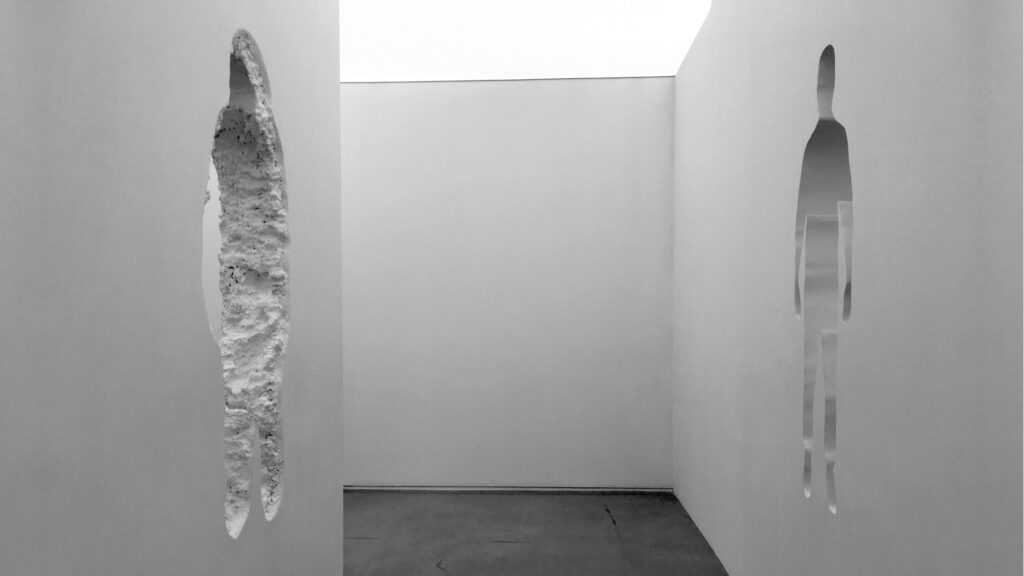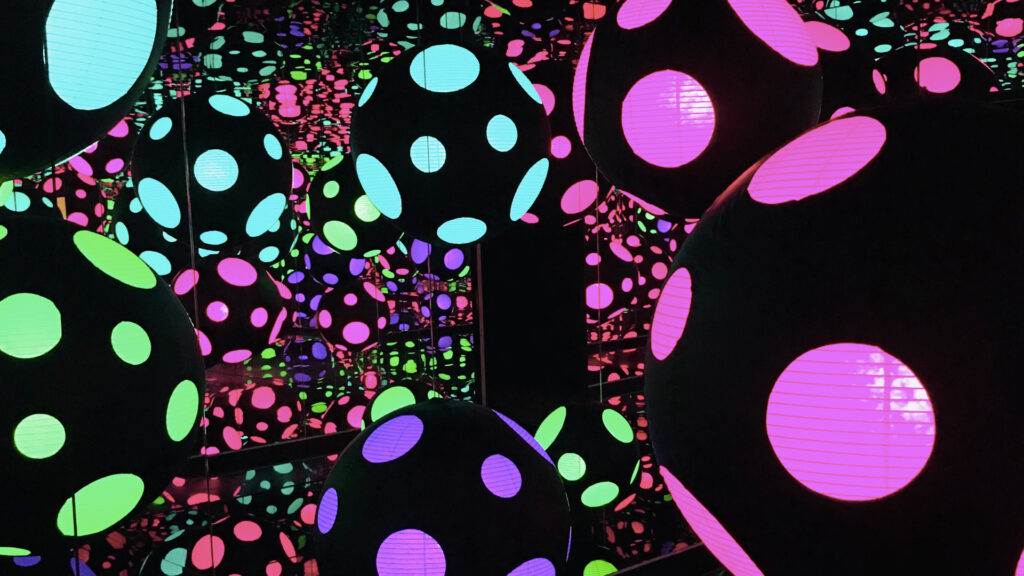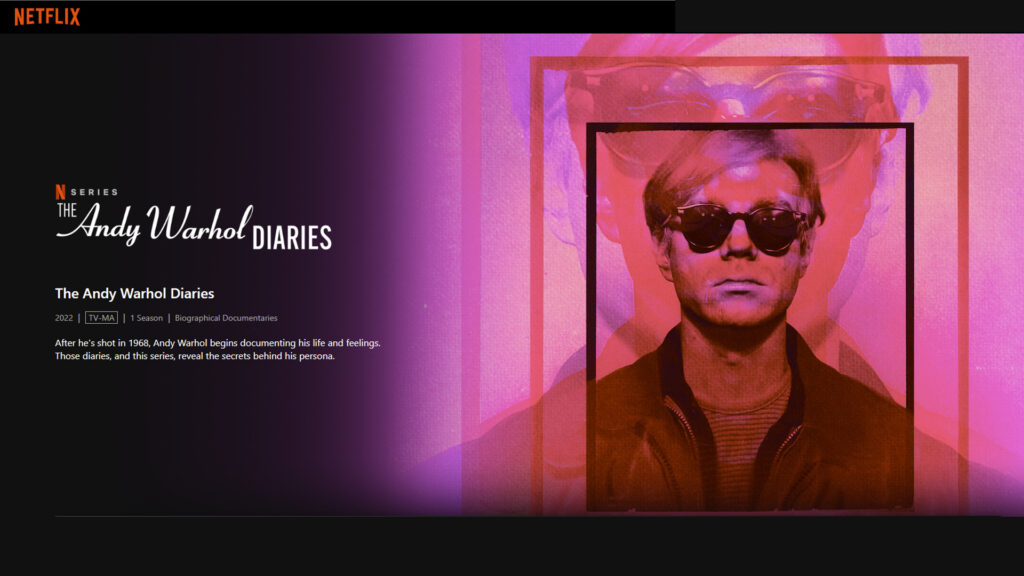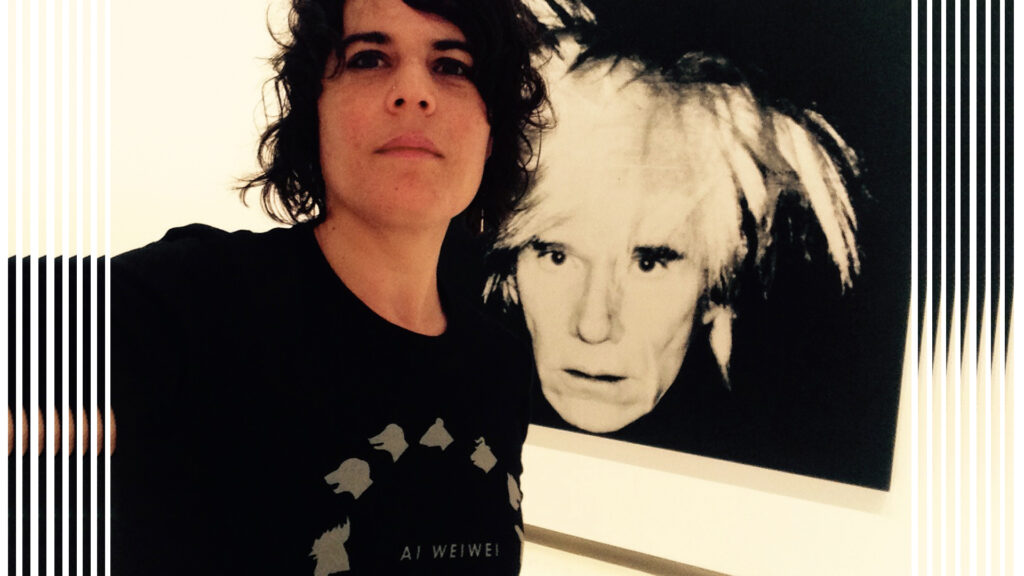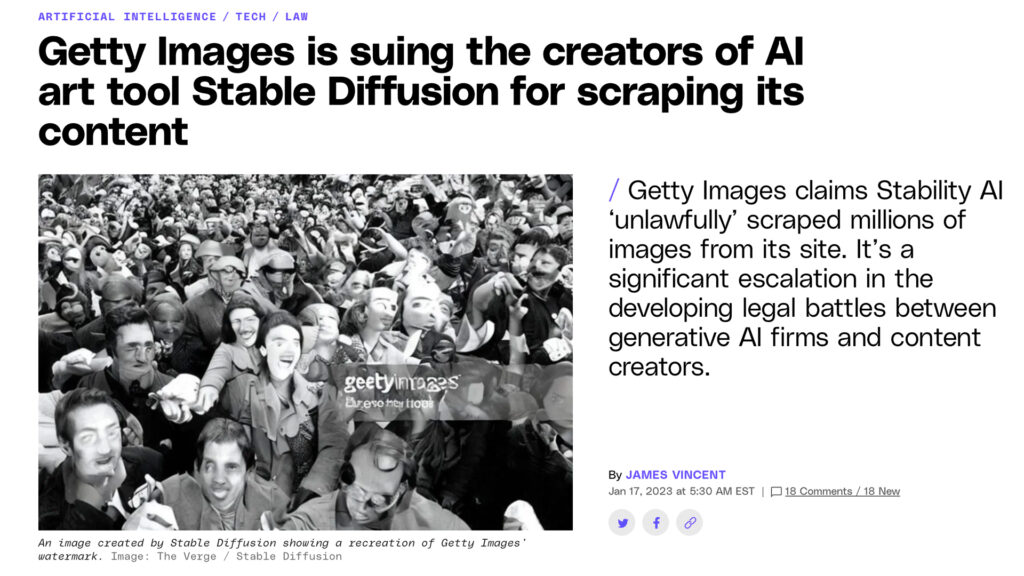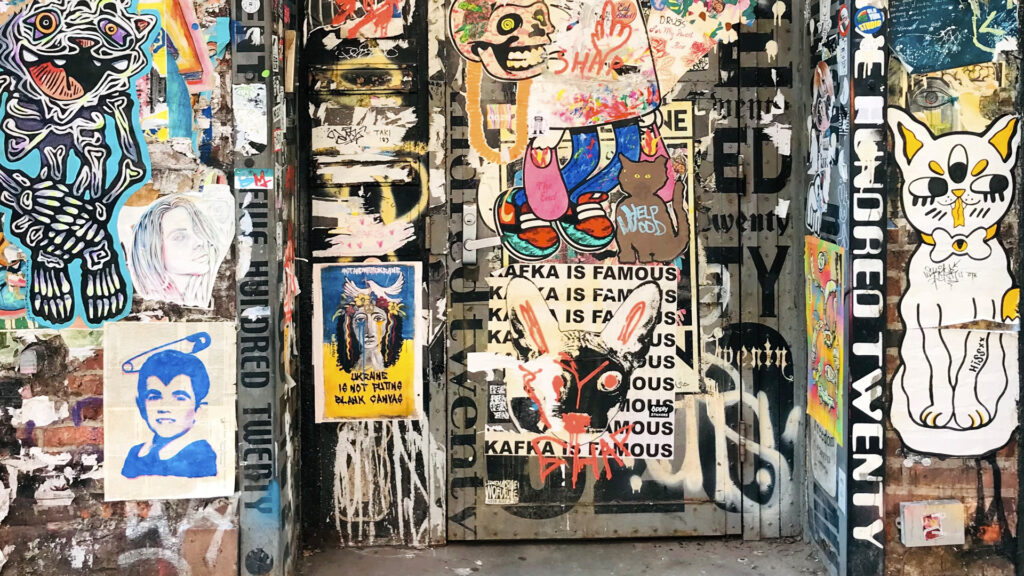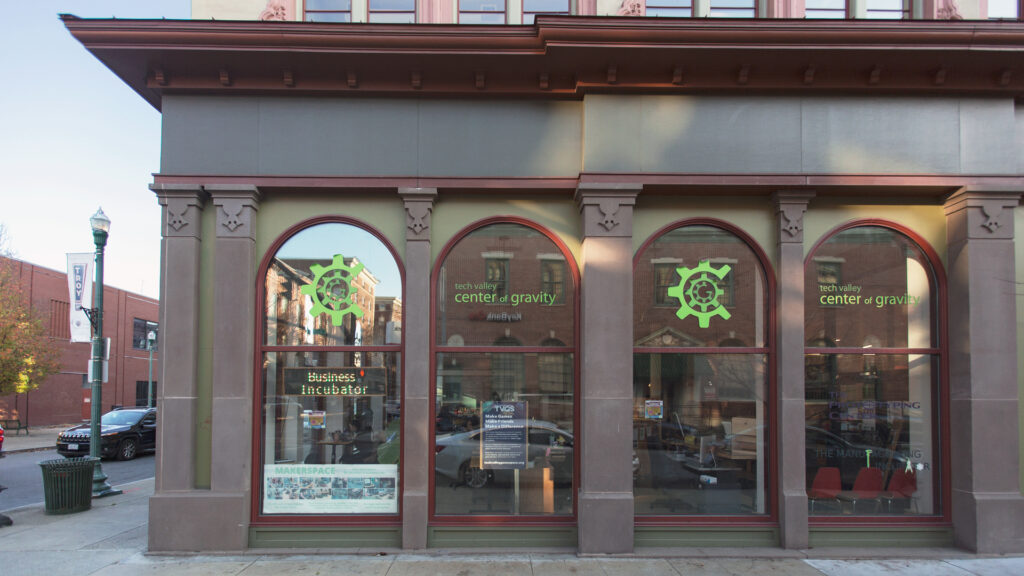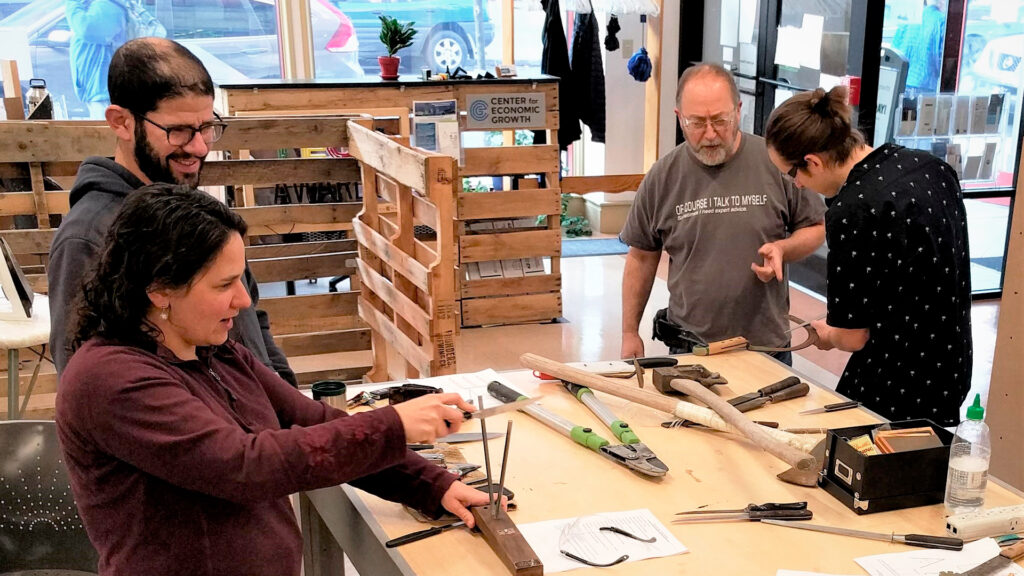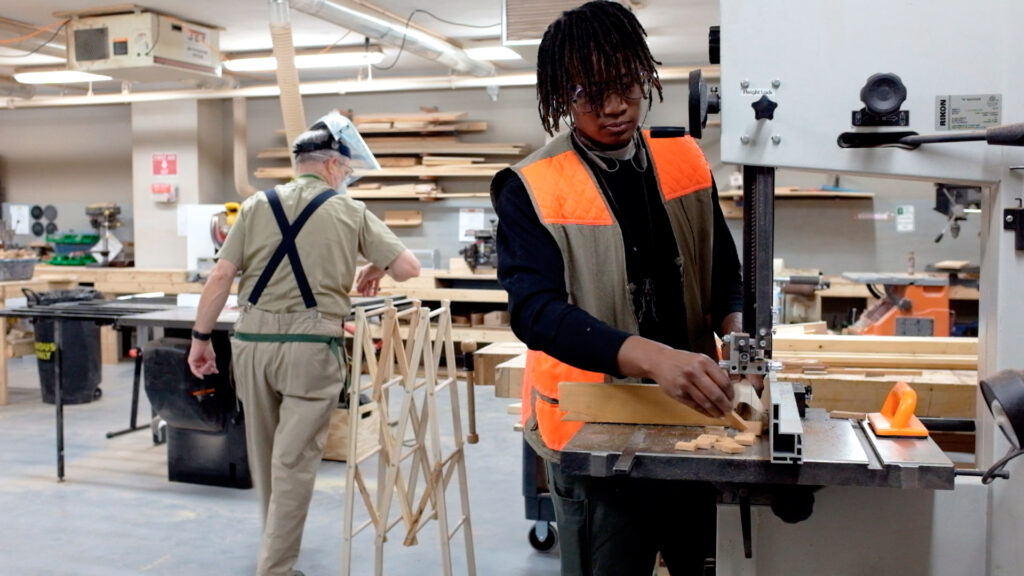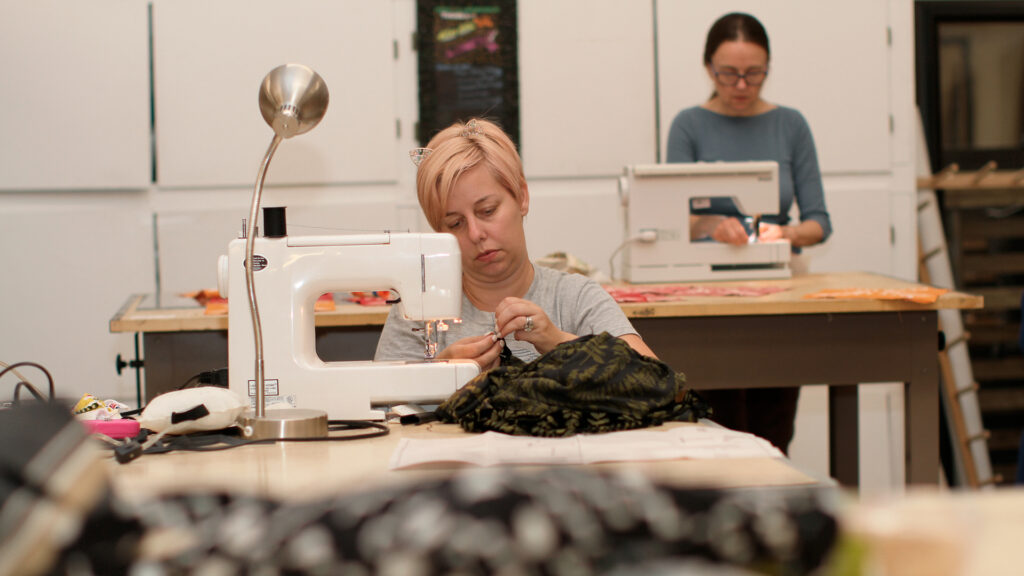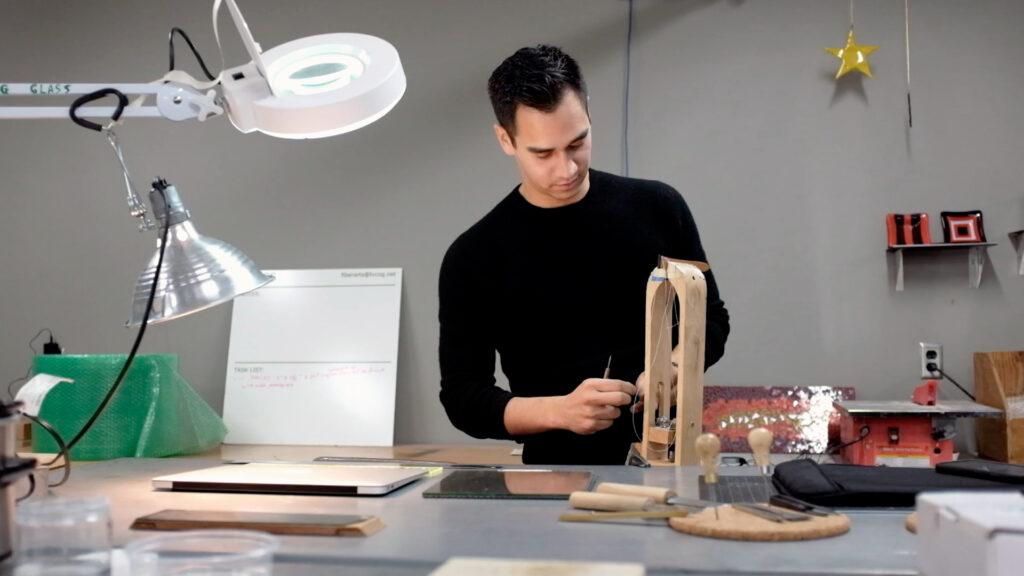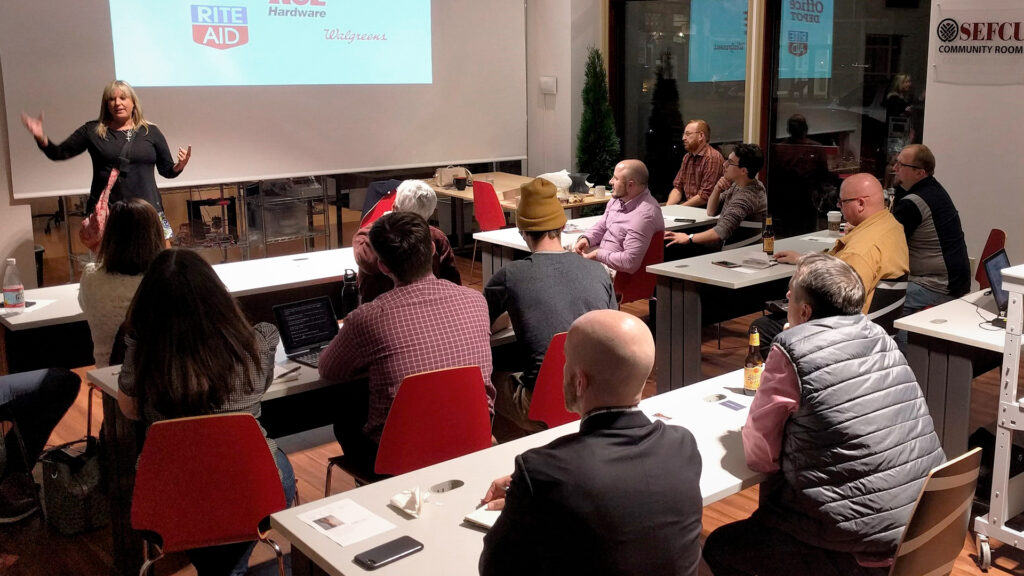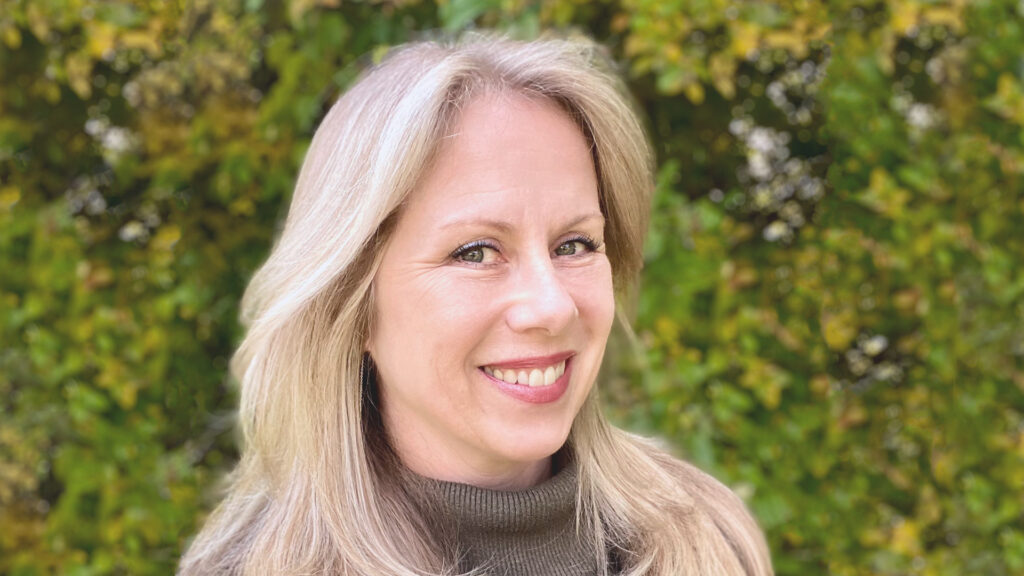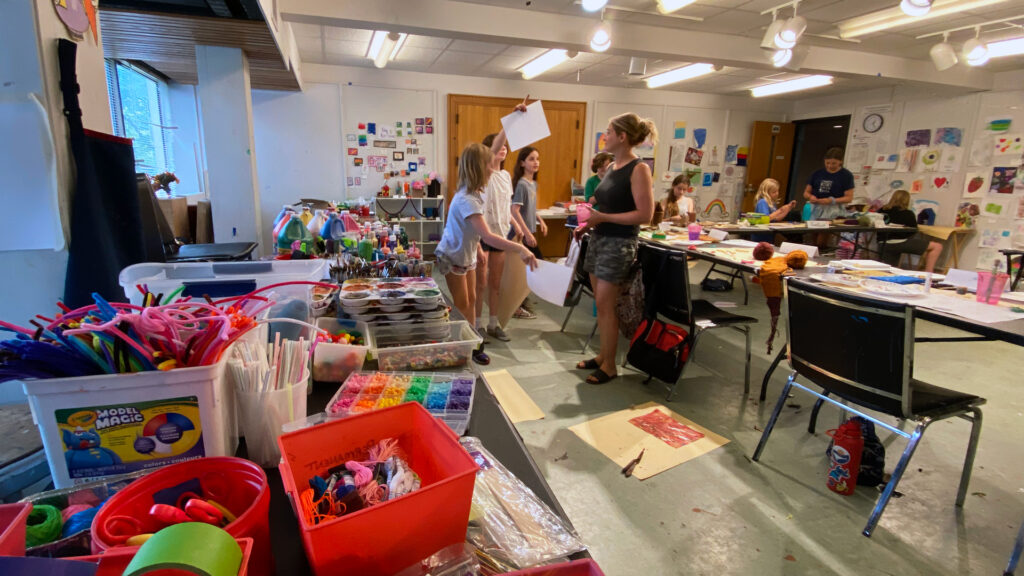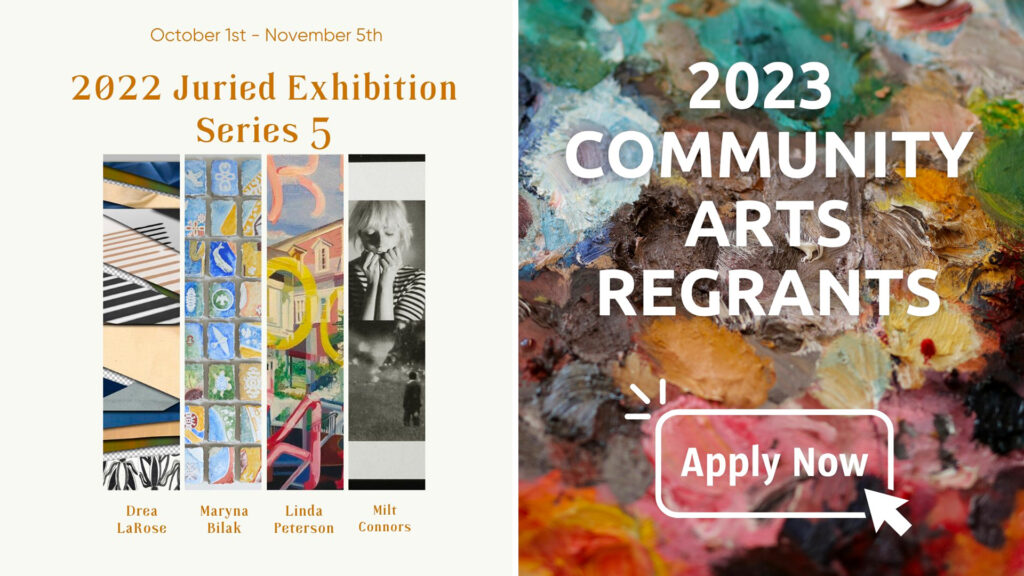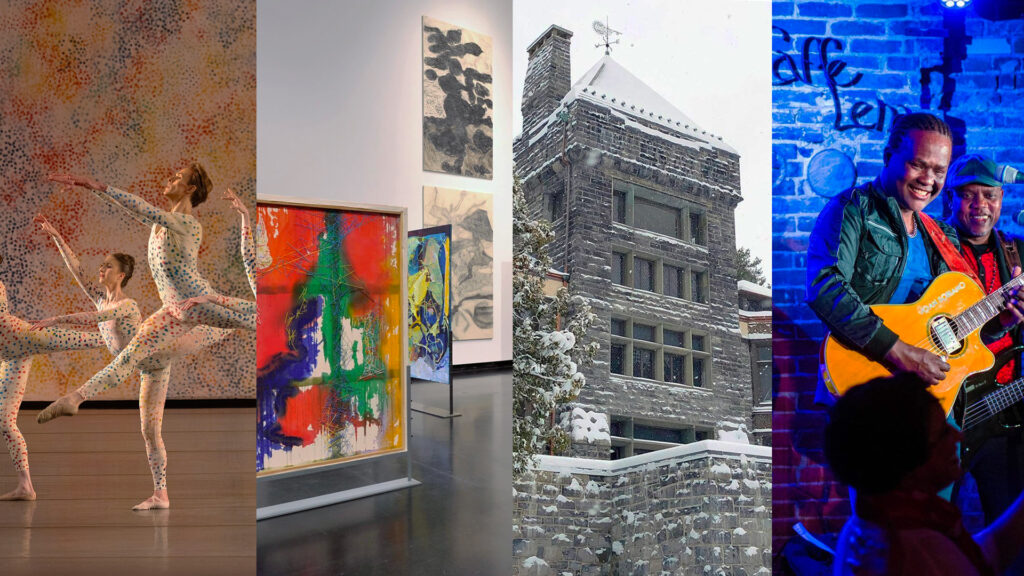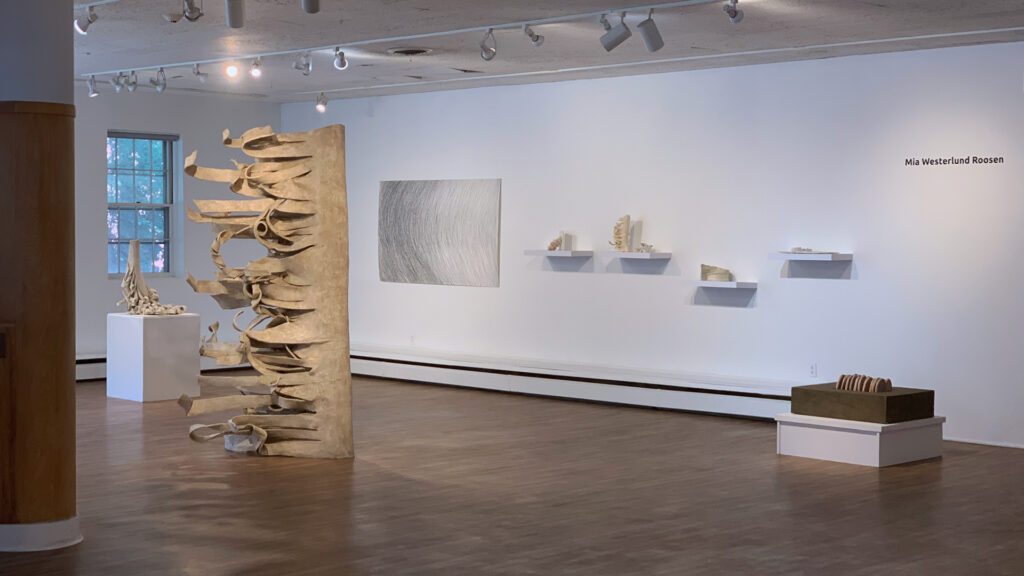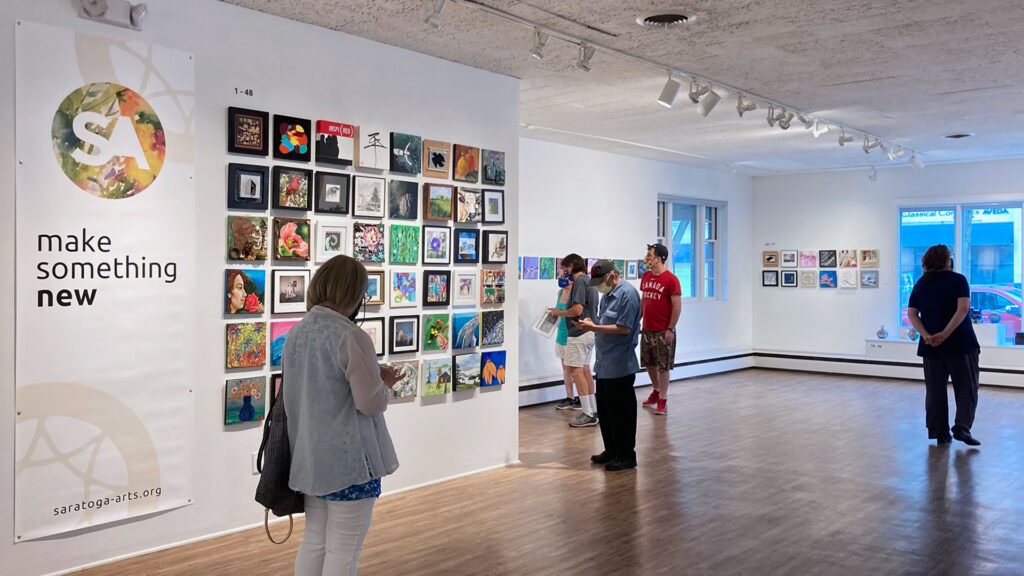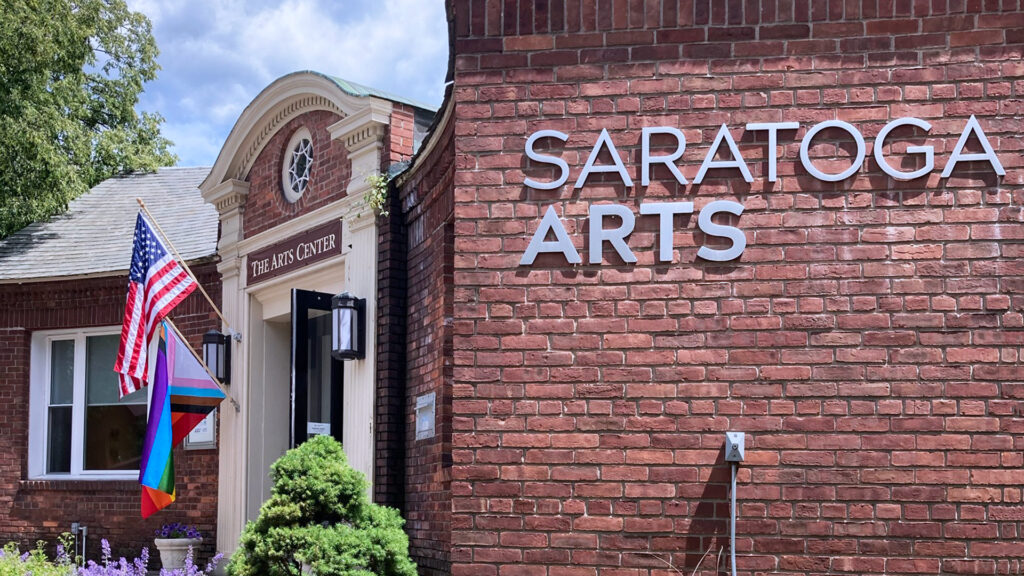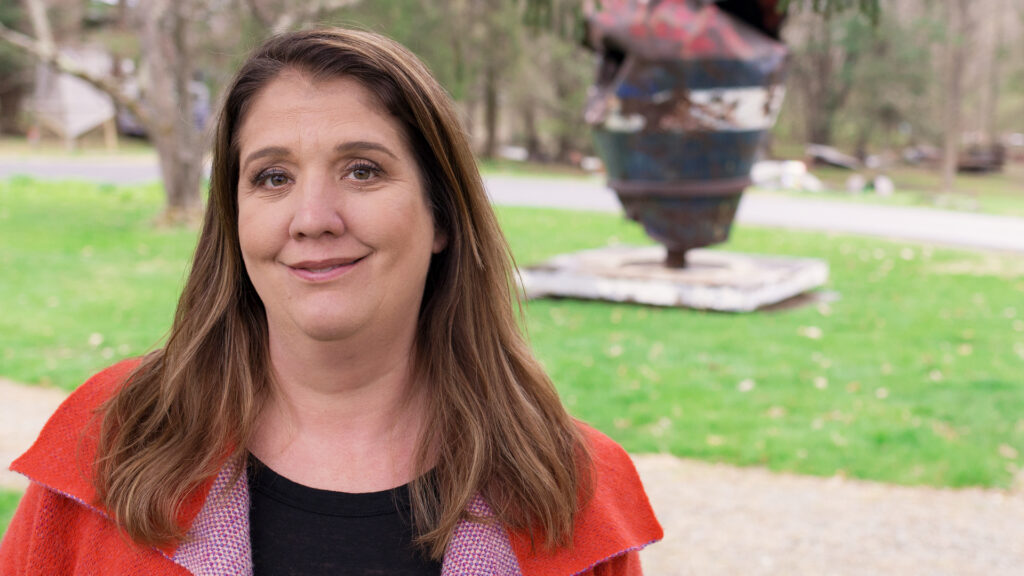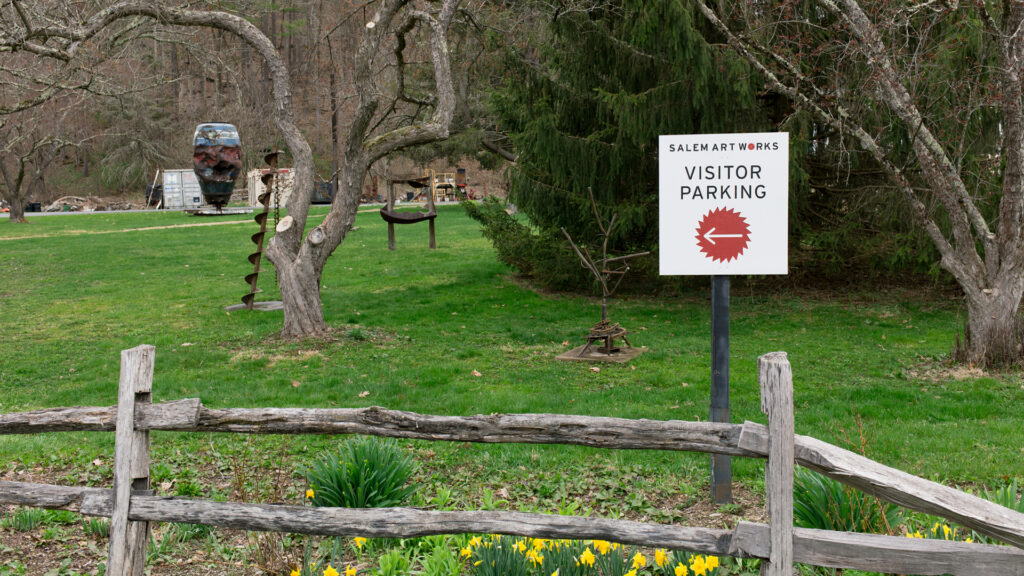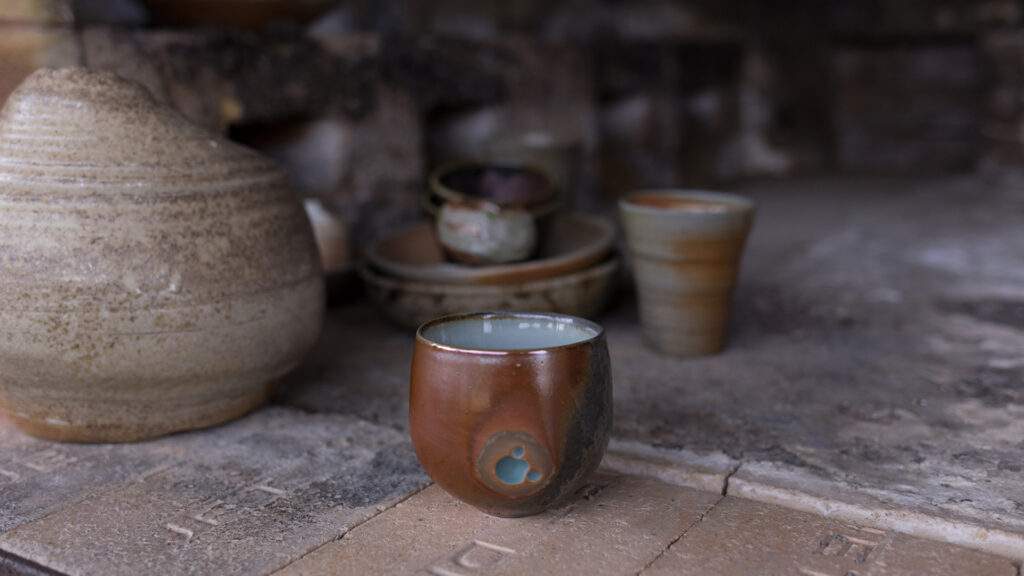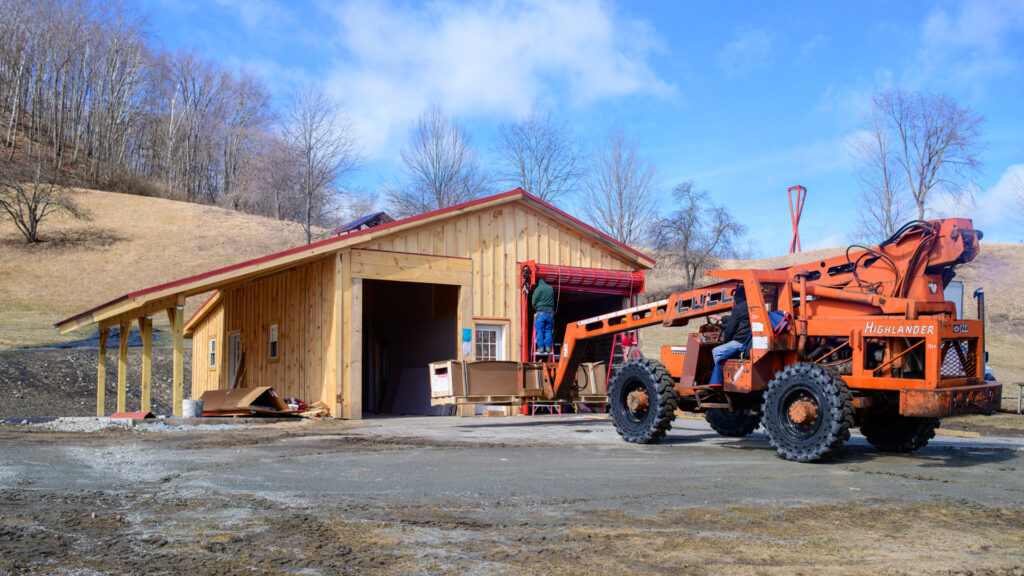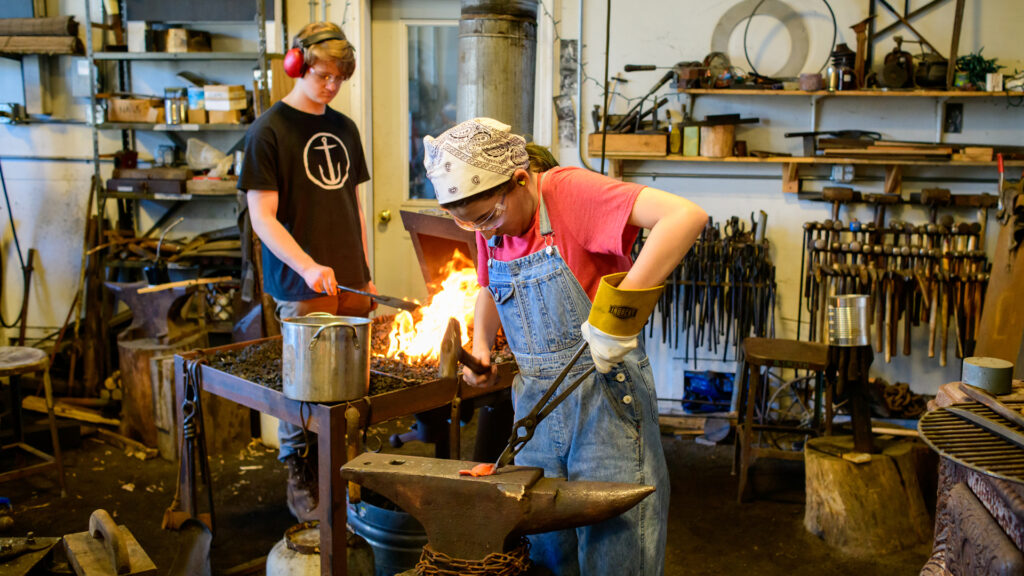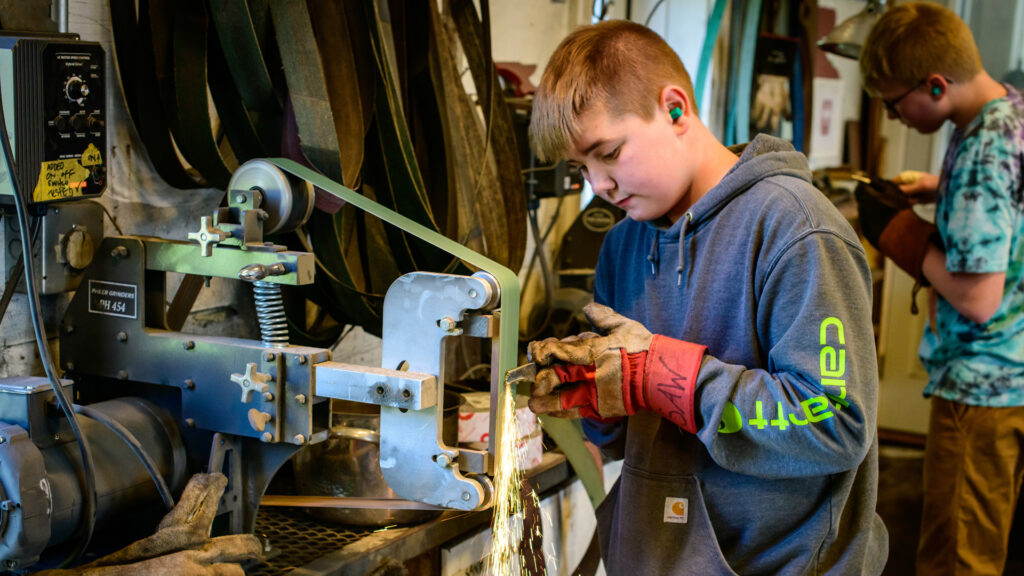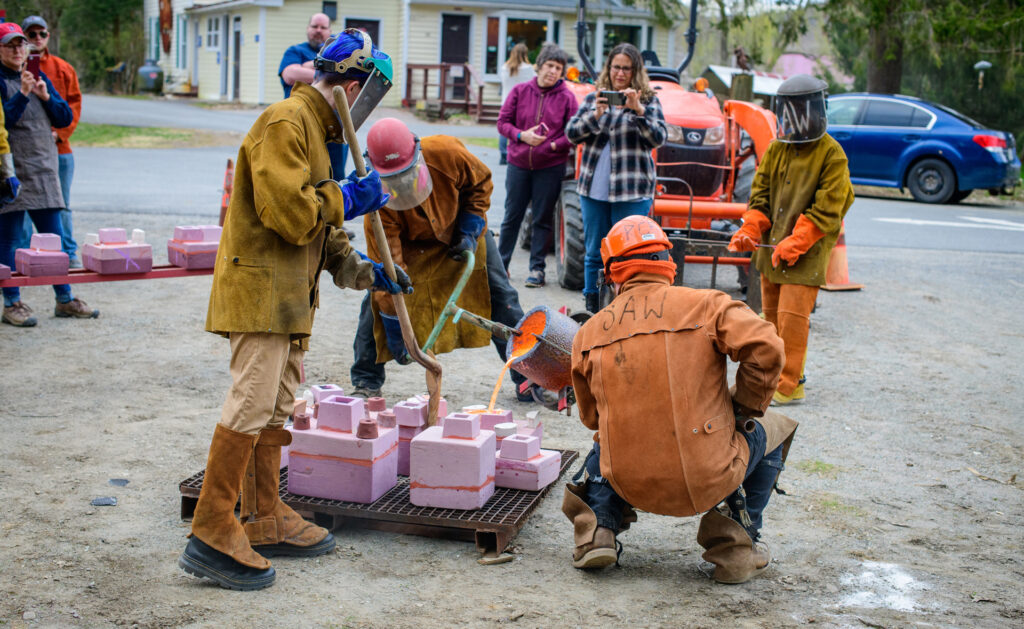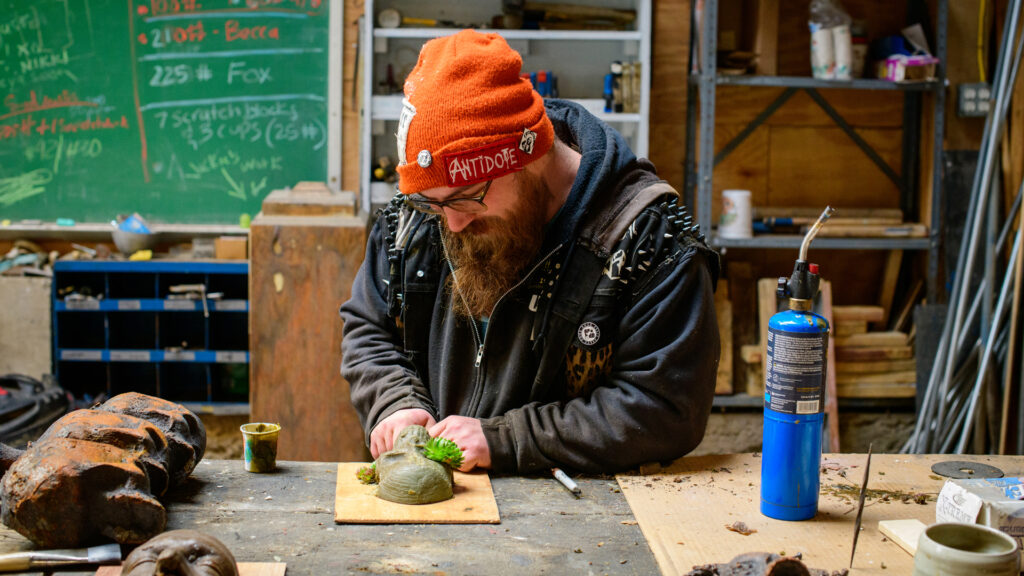I met Trixie of Trixie’s List fame outside of Club Helsinki in Hudson, NY. It was part of a quick promotional shoot for ‘Wish You Were Hear,’ a covid pandemic live broadcast music series that I was co-producing with Ryder Cooley of the Dust Bowl Faeries. Since then, I have been on Trixie’s mailing list and recently came across this great article by Ben Rendich that I wanted to share with ACE! subscribers…very cool things are afoot in the sustainable fashion scene in Catskill…as you shall see.
EDITORS NOTE: Original article was published in December so you will notice a mention of the holidays.
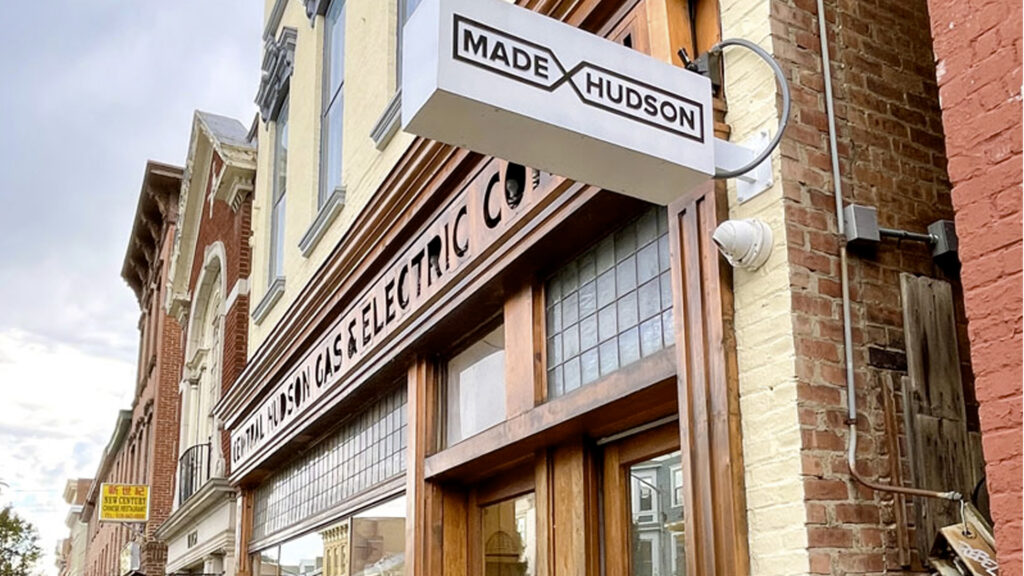
For anyone in search of a last-minute holiday gift, try swinging by Made X Hudson – the full service design atelier headquartered on Main Street in Catskill. From their own branded clothing (produced in-house by a team of skilled seamsters) to beauty and pantry items from a roster of Hudson Valley makers, everything in the store bespeaks local quality.
In addition, Made X Hudson offers a variety of ongoing events and unique services, including sewing classes, knitting circles, Pilates, garment alterations, and even custom clothing.
“We do so many different things, it’s kind of bonkers,” says Sergio Guadarrama, co-founder and the gentleman who helms all of Made X’s creative decision-making.
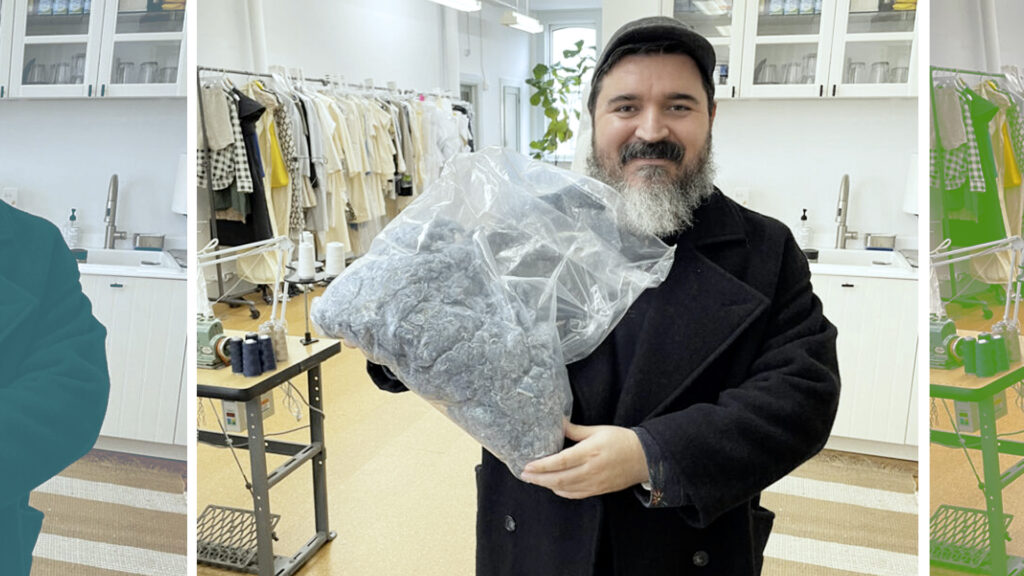
Image: Provided
“We’ve done a lot in two years,” agrees Eric De Feo, who manages the business side of things. “We don’t sleep much. It’s 24/7 work.”
Eric is founder and director of the Hudson Community Incubator, an organization devoted to fostering sustainable businesses in the city. It was through this organization that he met Sergio, who’d moved to the area and wanted to open a garment factory.
“It was the peak of the pandemic at that time,” says Eric, “and a lot of factories were struggling. A lot of designers were moving up from the city as well.”
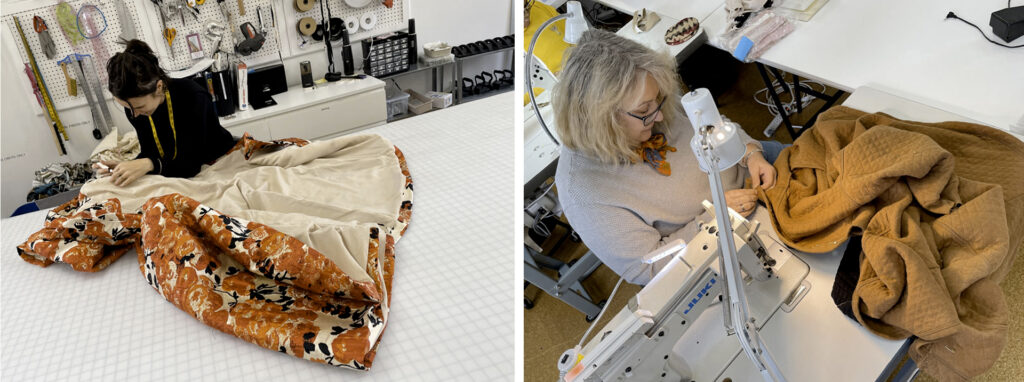
The duo hatched their plan in Hudson; they just couldn’t afford any real estate. “We started in a little barn in Leeds with two sewing machines,” remembers Eric. “As soon as we opened our doors, we had orders to create products – from day one.”
Eventually, they allocated enough resources to open their Catskill factory in November 2021, followed by an adjoining shop in March of this year. They opened their Hudson shop this past September.
Sergio has been in the industry for over twenty years, formerly working in women’s evening wear. “I love making things with my hands,” he says. “I love focusing on sustainability and trying to make the fashion industry as ethical as possible.”
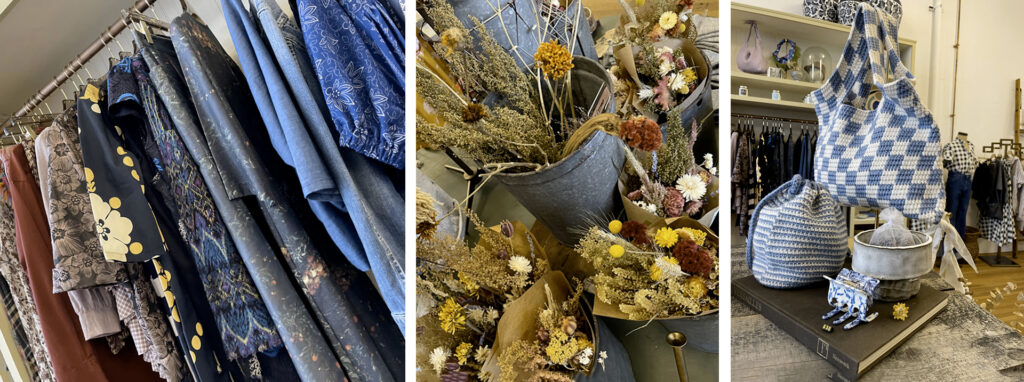
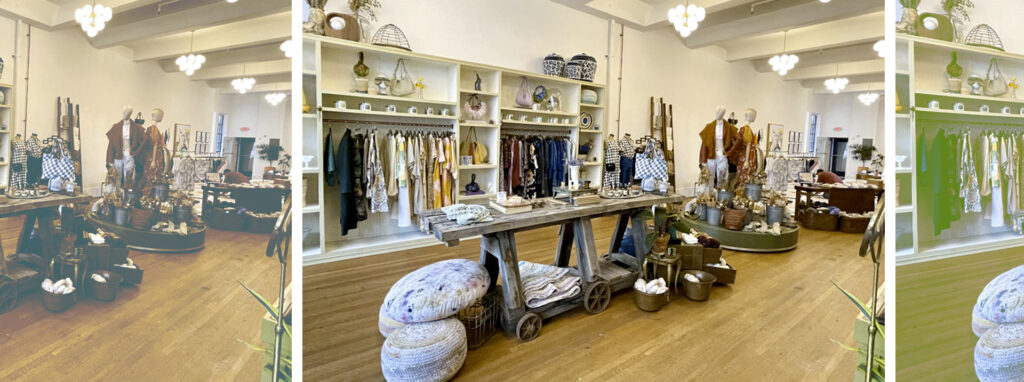
His familiarity with the less-than equitable practices of other companies has aided in the creation of a factory that, as he puts it, “encompasses all the good.” The objective at Made X Hudson is to put employees first, and to bring manufacturing back to the community. This entails working in the “old style,” where workers are viewed as an investment, not an expenditure.
“You can overhear the banter,” Eric points out, referring to the conversation that’s drifting into the office where we’re conducting our interview. “Usually that’s not allowed in other factories.”
Made X Hudson employees are all folks based in Hudson, Catskill, and Saugerties; their workroom is on the second floor of the Catskill shop. “We have a fabulous team,” says Sergio. “No one is coming in with much factory experience, because many factories have been shuttering over the last few decades. So everybody’s being trained up – usually from some basic, home-sewing experience.”
“That’s why we opened up our retail shops,” he continues. “To subsidize our training and factory work so that we don’t have to create an environment that’s top-down… [It] enables us to have a more enjoyable work environment.”
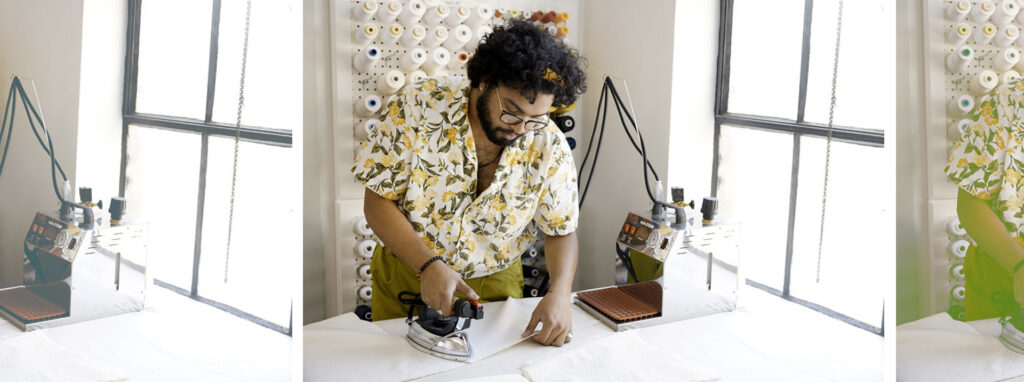
This empowered mindset is echoed in Made X’s inventory as well. Most of the products in their shops originate from Hudson Valley artisans – including Brosgé, a Schenectady-based brand of eco-friendly clothing for plus-sized people; MLE, Saugerties designer Emily Li Mandri’s line of handbags, hair clips and other accessories; and Dunia, a Croatian-American designer who curates Made X’s jewelry selection.
Sergio says that this maker-to-store supply chain is yet another means of fostering sustainability. “When you spend money in stores that are selling products made in other locations, you’re sending money away from your own community. What we’re doing leads to a circular economy.”
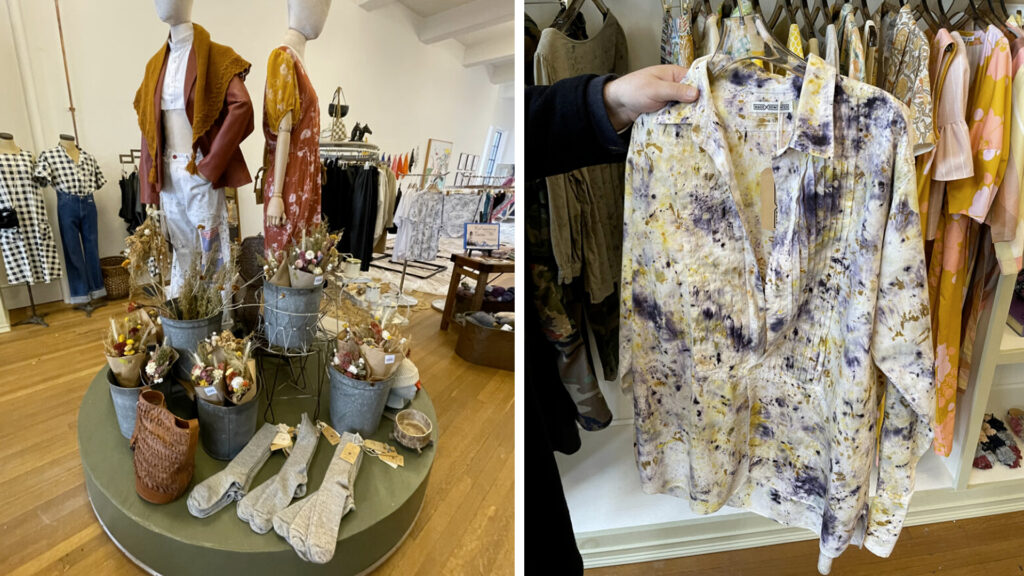
Made X Hudson runs the gamut of price points so that everyone can participate in sustainability.
To that end, Made X Hudson is also involved in spearheading a New York State grant initiative that will create a self-sufficient, regional clothing industry, from seed to finished product. “We were selected alongside RPI and FIT to build a fashion innovation center,” says Eric, “which is going to focus on farm-to-fiber products, lab-grown textiles, and also work to promote a New York sustainable supply chain.”
In the meantime, Made X Hudson runs a popular quarterly clothing swap, where for $15 you can bring as many items and take as many items as you want. “You can get a full wardrobe for fifteen bucks,” quips Sergio. And while at the store, swappers can pick up one or two of Made X’s upcycled, vintage pieces, which are sold at entry-level prices alongside their in-house products.
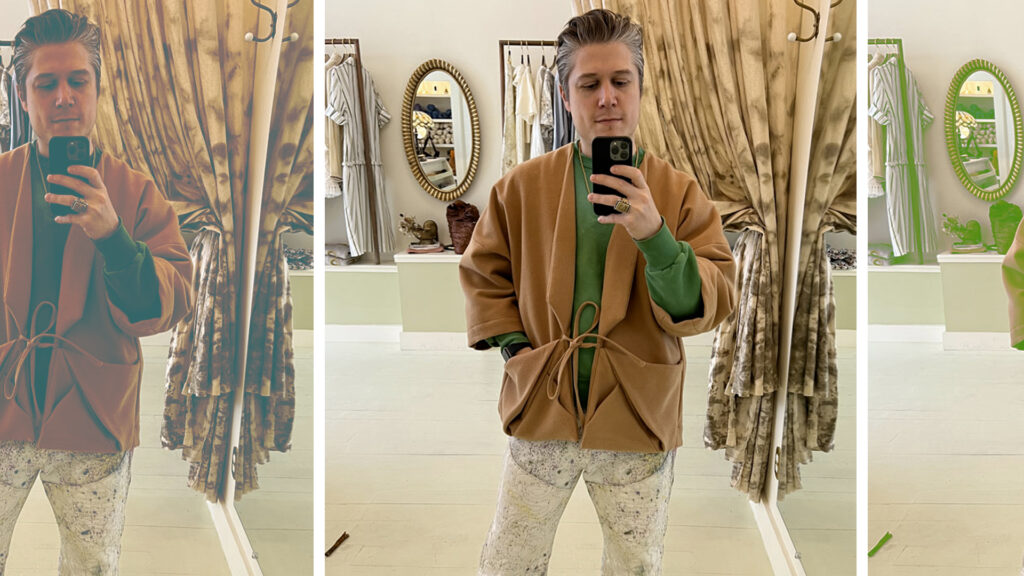
“We run the gamut of price points so that everyone can participate in sustainability.”
Their Catskill location recently featured the team’s first gallery show, showcasing works by Woodstock based photographer Chase Pierson, and every weekend, Atelier Kuki serves farm-to-table, gourmet Japanese bento and desserts from 12-6pm.
“It’s all a lot of fun,” says Sergio. “And it feels like we’re helping people, too.”
You can check out all of Made X Hudson’s services and upcoming events at their website : madexhudson.com
Ben Rendich is a filmmaker and writer. He’s in pre-production on his first feature, and has a blog where he writes movie reviews and essays called Reflections on a Silver Screen. He lives in Catskill.
This article was reprinted with the permission of Trixie’s List where it was originally posted.
